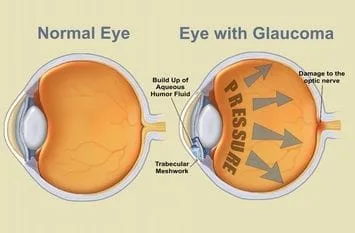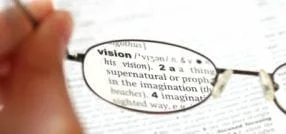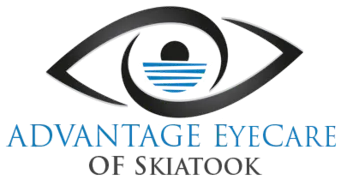
Dry Eye Syndrome
This occurs when the normal production of tears decreases, or the tear film is normal but evaporates too quickly. In many cases dry eye syndrome is a life long problem. You can relieve the symptoms, but not usually cure the original cause. OTC artificial tear eye drops, prescription eye drops, or in some cases blocking the tear drains (called the "puncta") with punctual plugs will increase the moisture on your eyes to provide relief. Schedule an appointment to speak to our optometric staff to see which options are best suitable for you.

Diabetic Retinopathy
This is a condition when a diabetic persons blood sugar gets too high. High blood sugar levels start a series of events which end in damaged blood vessel walls. As such, the blood vessels begin to leak fluid or bleed, causing the retina to swell and form deposits know as exudates.
Vision can be lost if these spots are not watched and treated. At AEC, we carefully examine the back of your eyes to follow and manage this as well as other important eye diseases.

Cataracts
This is a clouding or opacity of the natural internal lens of the eye. This opacity may be a small spot or may cover the entire lens. When light enters the eye it is scattered , causing images to appear hazy and blurred. There are many different types of cataracts.
The example shown here is a cortical cataract. Here the opacity forms first in the periphery of the lens and develops inward, like spokes of a wheel. Ultimately, the best treatment is to remove the cataract lens and replace it with a man made lens. This is referred to as cataract surgery.

Macular Degeneration
This is a condition in which the central part of the back of the eye loses blood circulation. It is considered a natural aging process. There is a breakdown of the retinal pigment epithelium cells in the macular region.
As the disease progresses, central vision diminishes. It is believed that this breakdown may be due to lack of nutrients being supplied to the region, additional studies have found a genetic link to this disease. Treatment can range from better nutritional management, sometimes to include a tablet containing the primary minerals and vitamins that are found to be lacking in many macular degenerated patients.

Glaucoma
This occurs with a buildup of the internal eye pressure (IOP or intraocular pressure) which can damage the optic nerve; the structure that transmits visual information from the eye to the brain.
Glaucoma typically affects the peripheral vision first, making this disease harder for patients to detect in early stages. If glaucoma is uncontrolled or left untreated, it can eventually lead to blindness.
Depending on the severity of the disease, treatment for glaucoma can involve the use of medications, conventional (bladed) surgery, laser surgery or a combination of these treatments. Medicated eye drops aimed at lowering IOP usually are tried first to control glaucoma.

Astigmatism
Astigmatism is one of the most common vision problems. Astigmatism is caused by an irregular shaped cornea, the clear front surface of the eye. In astigmatism, the cornea isn't perfectly round, but instead is more football or egg shaped. Many people are relieved to learn that astigmatism is not an eye disease, like nearsightedness and farsightedness, astigmatism is a type of refractive error.
In most astigmatic eyes, the irregular shape of the cornea causes light rays to form two distorted images in the back of the eye, rather than a single clear one.
In most cases, astigmatism can be fully corrected with eyeglasses or contact lenses such as gas permeable (RGP or GP) contact lenses or soft contact lenses, called toric soft lenses. Depending on the type and severity of the astigmatism, LASIK or other types of refractive surgery may be another option for correction.

Presbyopia
Presbyopia is a age related loss of flexibility of the lens inside the eye. Presbyopia occurs sometime after age 40 when people begin to experience blurred near vision when performing tasks such as reading, sewing, or working on the computer. Presbyopia happens to everyone at some point in life, even those who have never had a vision problem before.
Eye wear is used to treat presbyopia. The most common correction is bifocal lenses or progressive lenses. Bifocal lenses have two areas of correction; the top part for nearsightedness, farsightedness, and/or astigmatism, while the lower portion of the lens holds the near prescription for close work. Progressive lenses are multifocal lenses that offer a gradual transition between a number of lens powers for different viewing distances, with no visible lines in the lens. Over the counter reading glasses as well as multifocal contact lenses are other options used to treat presbyopia.
